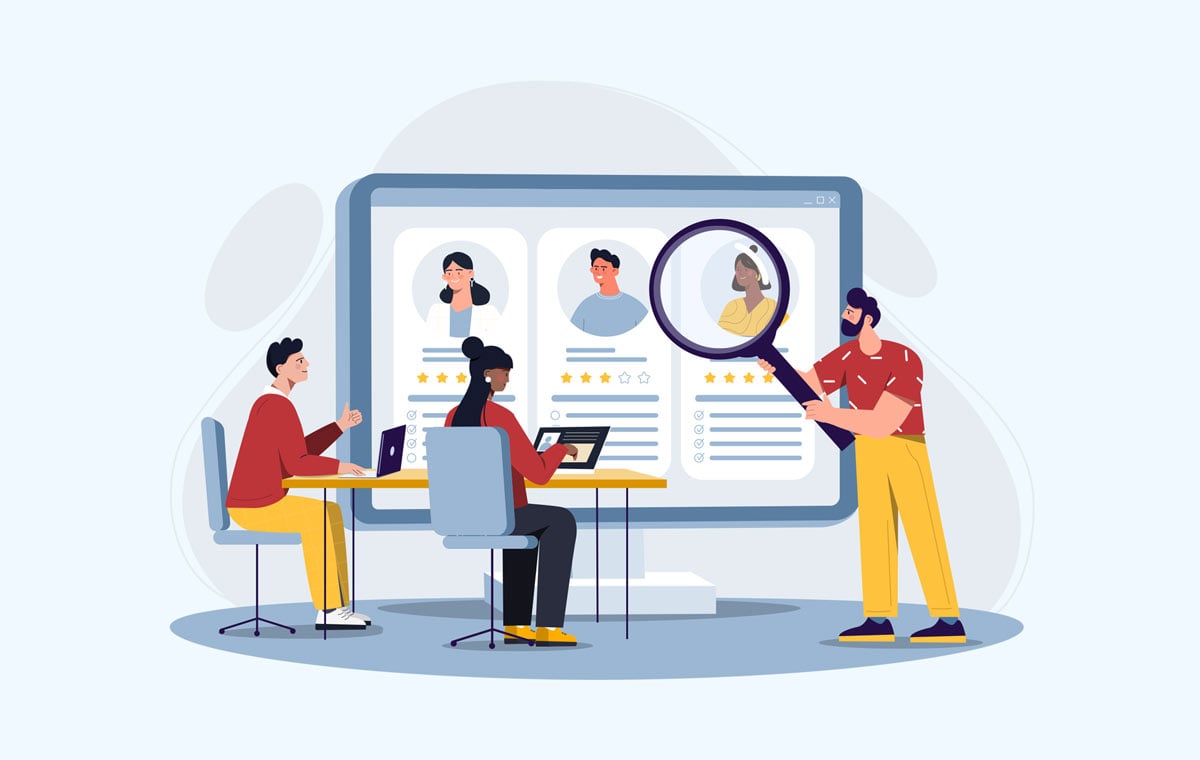Fair and equitable treatment of employees is foundational to an institutional culture of respect, diversity, and inclusion where productivity and innovation can thrive. Fair treatment also minimizes legal risks associated with discrimination and biases, strengthening an organization's reputation and appeal to top talent.
Review and promotion processes play a key role in the employee experience, and reflect workplace ethos.
That's why it’s essential to design strategies and practices that minimize the impact of bias, including unconscious bias, to help ensure just treatment for all employees.
Explicit vs Implicit Bias
Let's start with a basic definition: Bias is the act of showing prejudice in favor of or against an individual, entity, or group in a manner considered unjust.
Bias can be explicit (conscious) or implicit (unconscious) and can shape attitudes, behaviors, words, or actions in our personal lives and workplaces.
Independent DEI Practitioner and professional development consultant, Camille Simone Edwards, explains:
“Bias, whether we’re aware of it or not, is a part of being human. It's not whether we have biases, it’s a question of what kinds of biases we hold.”
Bias can be based on gender identity, sex, race, religion, culture, political affiliation, age, beauty, or just about anything else. Assuming a woman can’t do a job as well as a man based strictly on that criterion is an example of bias.
Confirmation bias一commonly held一favors things that “confirm” preexisting beliefs. For example, believing a low-carb diet is the most effective way to lose weight might lead a person to assign more authority to articles and studies that support this view while ignoring or discounting research to the contrary.
Unconscious bias, which we all have, is particularly insidious because it instantaneously impacts our judgments about people and situations without our conscious awareness. In Microsoft's online training on Unconscious Bias, it's explained in this way:
“[Unconscious biases] are mental shortcuts that help us navigate our day, effectively and efficiently.”
Bias in the Workplace
According to a survey from global professional services firm Deloitte:
- More than 60 percent of respondents reported the presence of bias in their workplace.
- 68 percent said witnessing or experiencing bias harmed their productivity.
This last point is borne out by data from human resources firm Impact Group, suggesting that the annual cost of workplace bias is estimated at $64 billion.
While these figures may seem high, the reality may be even more pronounced.
“We know that when people come together in a workplace, bias will be present, no matter the industry,” says Edwards. “It’s not about assigning blame or shame, it’s about mitigating it.”
Indeed, workplace bias manifests across nearly all work-related activities. Here are some of the more common:
- Unconscious bias in resume screening during the hiring process.
- Exclusion from leadership opportunities or projects.
- Interruptions while providing views and opinions.
- Exclusion from meetings or conversations.
- Downplaying work-related or other contributions.
- Gender bias in performance reviews, where men and women get different ratings for the same behaviors.
- Similarity bias in the promotion process where an executive will favor promoting employees who share similar backgrounds or working styles to them.
What Does the Law Say About Bias in the Workplace?
The legal basis for advocating bias-free review and promotion processes in the workplace is largely grounded in ensuring compliance with Equal Employment Opportunity (EEO) regulation, established to enforce various federal laws prohibiting workplace discrimination.
Organizations that violate EEO policy can face steep penalties, such as fines, mandatory corrective actions, and legal injunctions.
They can also be subject to lawsuits from affected individuals and lose federal or state contracts. Additionally, damage to an organization’s reputation can be significant, resulting in business loss and challenges in attracting or retaining talent.
Strategies for Designing Bias-Free Review & Promotion Processes
When diverse perspectives are valued and utilized in the workplace, morale, job satisfaction, and the sense of belonging increase, leading to greater opportunities for outperformance and profitability.
Mitigating bias in review and promotion processes should be part of a holistic approach across all organizational activity and with engagement of the full org chart. As such, here are a few recommendations to assist in designing bias-free review and promotion processes specifically:
Establish Policies & Procedures for the Right Reasons
Notwithstanding the legal and business cases for bias-free processes, promoting an inclusive and equitable workplace culture should be at the heart of your anti-bias efforts. Merely “going through the motions” will fall short due to a lack of genuine commitment and understanding of the underlying issues.
Moving a workplace culture forward can take time and mistakes are inevitable, but sincere engagement backed by concrete action can make a meaningful difference.
Implement Regular Unconscious Bias Training
The necessity for implementing ongoing training on unconscious bias for all employees, especially decision-makers, is hard to overstate. It’s foundational to the development of a more inclusive workplace culture overall.
But getting people to understand their own unconscious biases and how to manage them can be a long-term process in itself, requiring commitment, practice, and reflection. Identifying the existence of unconscious biases is only the first step. Training should cover the effects of bias and practical strategies to recognize and mitigate them.
Grounding unconscious bias training within close proximity to hard science is also an essential aspect of success, according to Edwards.
“This type of training can evoke strong emotions, even fear, in people,” she explains “It’s critical that they understand what’s happening in their brains and what they can do to combat biases when they are activated internally.”
“A neuroscience-based approach to training with tools, such as implicit association tests and natural response data, for example, can help people feel human rather than being graded on whether they’re a good person or not,” she adds.
Finally, training often includes recommendations for objective decision-making and equitable treatment, helping ensure reviews and promotions are centered around merit and performance, rather than subjective perceptions.
Create Transparent Career Pathways
Transparent career pathways set clear, objective criteria for advancement, ensuring all employees understand what is required to progress in their careers. It helps eliminate ambiguity and personal bias from decision-making, with promotions based on preestablished standards rather than subjective judgments.
Additionally, transparency fosters a sense of fairness and trust among employees, encouraging them to focus on meeting or exceeding these criteria, knowing that their efforts will be recognized and rewarded equally.
Use Objective Metrics Where Possible
Related to the focus on transparency discussed above, utilize objective metrics where possible to eliminate bias from decision-making processes. Here are a few:
- Sales. Key performance indicators can include sales revenues, new clients acquired, or percentage growth in a sales territory.
- Projects. For project-based roles, consider timely and budget-sensitive project completion rates. If quality standards are included, ensure they are clear, achievable, and consistent across similar projects.
- Customer Service. Measures here could include Net Promoter Scores (NPS), customer service ratings, or the resolution time of customer issues.
Incorporate Diverse Feedback
Implement a 360-degree framework, where feedback comes from a broad and diverse group of colleagues and supervisors, to make the review process more robust, accurate, and fair.
Analyze the Data
Employ data analysis to examine historical promotion and performance review data to identify any patterns of inequality or bias.
For example, by analyzing the demographics of employees who have been promoted over a certain period, companies can assess whether certain groups are underrepresented in senior positions. This could indicate a potential bias in the promotion process.
Deeper analysis can uncover whether performance metrics themselves are objective and fair.
For example, if male employees are promoted at a higher rate than female employees despite similar scores in productivity and performance evaluations, look for additional criteria that could be causing the disparity.
In this example, “time spent at the office” is identified as a significant factor in promotion decisions, even though it doesn’t correlate with output and impact and inadvertently disadvantages employees with caregiving responsibilities, who are more often women.
Cultivating a Bias-Free Workplace
Finally, implementing these strategies requires a concerted effort from all levels of an organization, from HR departments to senior leadership, to ensure that the processes for review and promotion are as bias-free as possible.
It's also essential for organizations to continually assess and refine their strategies in light of new insights and feedback to foster a truly inclusive work environment.
Ultimately, fairness and equity are central to peoples’ feelings of goodwill, which are fundamental in achieving sustainable success, and maintaining a competitive advantage in the market.
Let's recap:
- Fair and equitable treatment in the workplace is crucial for fostering a culture of respect, diversity, and innovation, while also reducing legal risks and enhancing the organization's appeal to top talent.
- Bias in the workplace is likely more prevalent than leaders realize.
- One solution for creating a bias-free workplace includes implementing regular unconscious bias training for all employees, especially decision-makers, to foster an inclusive culture.
- Transparent career pathways and the use of objective metrics in review and promotion processes help eliminate ambiguity and personal bias, ensuring advancements are based on merit.
- Incorporating diverse feedback and analyzing promotion and performance review data for bias patterns are recommended strategies to promote fairness.
InclusionHub is an online, crowd-sourced resource directory dedicated to raising awareness about and improving gender equality, accessibility, DEIB, and other important social issues. To learn more about or join in this extraordinary pursuit, contact us today.






Leave a Comment